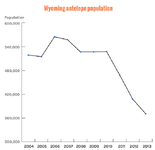Correct, but I don’t care that they aren’t successful and aren’t killing the vast majority of elk. I don’t want all those crowds in the woods. I don’t want all those people fouling up draw odds. It’s time to separate the men from the boys. Let’s reward the dedicated, not just anyone and everyone.I'd bet that the people that listen solely to the jackasses on a YouTube video are part of the 90% of hunters that kill 10% of the elk. Their lack of research and effort is really not helping them kill more animals. But their funds are definitely appreciated by the F&G departments.
Yes, their funds are needed and appreciated. But rather than open the floodgates and encourage every swinging unit to apply (and pay the Newbergs to market such, Barf!) what they could do instead that would help the truly dedicated is to require non refundable licenses to be purchased up front, with a check, in order to apply. A real, full fledged license. Not some small game thing. Game agencies would get their money, and the hunting experience wouldn’t be reduced for the truly dedicated. And don’t I don’t buy the crap about how that would turn things into a rich man’s game (more than it already is). It would just force guys to be more dedicated. To save a lil extra, maybe not blow their cash on their Mtn Ops and ho Hunt subscriptions and flat brims and lifted trucks. And it would force guys to really think about where they apply and spend their dollars, rather than carpet bombing the west because it’s (relatively) cheap and easy to do so. I think it would provide a better experience for all. Status quo doesn’t work anymore. Change needs to happen.
Last edited:


